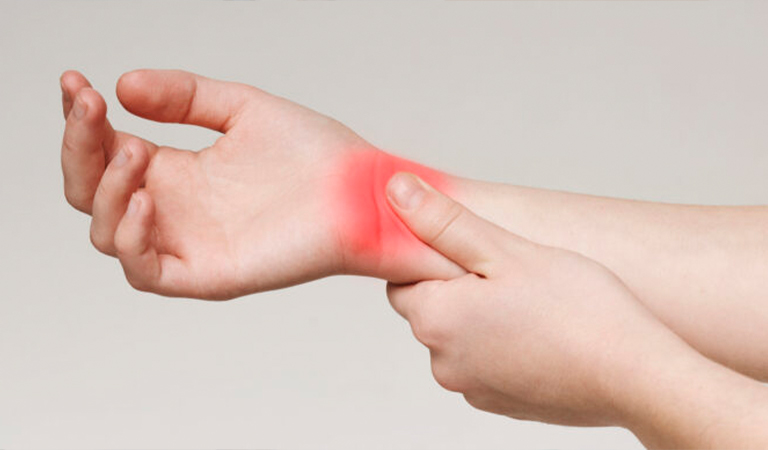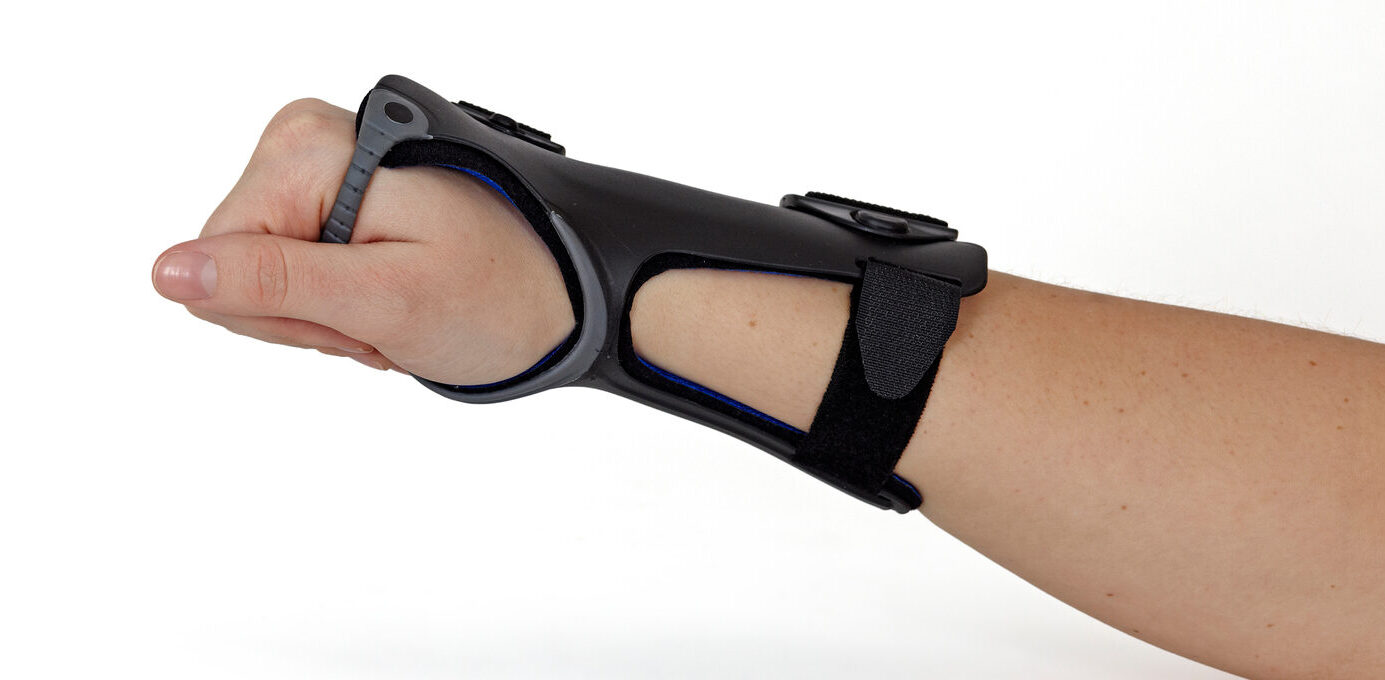
Carpal Tunnel Syndrome Explained
Carpal Tunnel Syndrome is a common condition that causes pain, numbness, and tingling in the hand and arm. It can present as pain and numbness in the area of the thumb, index, and long fingers. This can occur in one or both hands. The pain is the result of the compression of the median nerve where it is confined to a “tunnel” leading from the forearm to the hand. The compression decreases the ability of the median nerve nerve to function normally resulting in increased pain and numbness. Most cases are caused by a combination of factors. Women and elderly people are more likely to develop the condition.
Understanding the Carpal Tunnel
The carpal tunnel is a passage from the wrist to the forearm. It is surround by bones and ligaments and contains one nerve, the median nerve, and nine flexor tendons that allow for finger flexion. The median nerve provides sensation to the thumb, index finger, long finger, and one-half of the ring finger. The nerve also controls the small group of muscles found at the base of the thumb. One of the ligaments, the transverse carpal ligament, can be released surgically to provide more space in the carpal tunnel.
Carpal Tunnel Syndrome Risk Factors
The people at risk for carpal tunnel syndrome are individuals with jobs or hobbies that focus of repetitive use of the hand or activities that subject the hand to vibrations. Repetitive hand use and hand positioning in extreme flexion or extension can cause swelling and increase pressure on the nerve. Sports associated with carpal tunnel syndrome include cycling, tennis, and rowing.
Other factors that can contribute to carpal tunnel syndrome may include:
- Obesity
- Genetic predisposition
- Pregnancy
- Wrist fracture
- Rheumatoid arthritis
- Diabetes
- Hypothyroidism
Carpal Tunnel Symptoms
Symptoms typically begin gradually and without a specific injury. As the condition worsens, symptoms may become constant and can include:
- Numbness, tingling, burning, and pain primarily in the thumb, index, middle, and ring fingers
- Occasional shock-like sensations
- Pain or tingling that may travel up the forearm
- Weakness and clumsiness of the hand
- Dropping things due to weakness, numbness, or loss of proprioception
- Night-time symptoms are very common
If symptoms progress unchecked, grip strength can be impacted due to muscle wasting around the base of the thumb. It is important to note that symptoms will vary from person to person, and they can fluctuate during the early stages.
Prevention tips
- Nerve gliding exercises
Initial Home Treatment:
- Activity changes such as making changes to your worksite or work station.
- Medications such as nonsteroidal anti-inflammatory drugs (NSAIDs) and acetaminophen can help relieve pain and inflammation.
- NSAID examples: Ibuprofen, Advil, Aleve
- Acetaminophen examples: Tylenol
- Bracing at night will help keep your wrist in a neutral position which reduces pressure on the nerve in the carpal tunnel.
- Nerve gliding exercises
When to see a doctor
- When pain, numbness, and tingling become persistent, wakes you up every night and symptoms can no longer be relieved with positional changes or at-home conservative treatment.
Carpal Tunnel Syndrome Diagnosis
To diagnose carpal tunnel syndrome, a medical professional will initially discuss medical history, family history and any noticeable symptoms. The next step will include medical tests:
- Tinel’s sign: This test involves the physician tapping over the median nerve in an effort to produce a tingling sensation in the fingers.
- Wrist flexion (Phalen Test): In this test, the patient will wrest the elbow on a table and allow the wrist to fall forward freely. An individual with carpal tunnel syndrome will feel numbness in the fingers within one minute.
- X-rays: An x-ray may be ordered if there is minimal wrist motion or evidence of trauma or arthritis.
- EMG and nerve conduction studies: These tests will determine how well the median nerve is working and how well it can control muscle movement. It also shows the location of nerve compression.
Nonsurgical treatment
- Splinting
- Activity modification
- NSAID use
- Steroid injection:
- This can relieve painful symptoms or calm a flare-up of symptoms but their effect is sometimes only temporary.
- This can also be used by your doctor to diagnose your carpal tunnel.
Surgical Treatment
- The surgical procedure is called a “carpal tunnel release” and it is outpatient.
- The goal of the surgery is to relieve pressure on your nerve by cutting the ligament that forms the roof of the tunnel. This increases the size of the tunnel and decreases the pressure.
- Recovery may be gradual and complete recovery may take up to a year. Depending on the severity of your carpal tunnel, numbness may never fully resolve.
Carpal Tunnel Syndrome FAQ
-
Does typing on the computer increase my chances to get carpal tunnel syndrome?
- No, this does not increase your chances of getting carpal tunnel syndrome.
-
Do certain exercises increase your risk for carpal tunnel?
- No but any activities that place pressure on the wrist while it is flexed for an extended period of time can compress the carpal tunnel.
-
Is surgery common with carpal tunnel?
- Yes, there is approximately a 4 week recovery time with surgery for most people. It can take 4-6 months for swelling and stiffness to go completely away.
-
Can carpal tunnel reoccur after surgery?
- Yes, the carpal tunnel may scar back down over time and a second surgery may be required.
-
What type of complications can arise from treating carpal tunnel non-surgically?
- Symptoms can continue to progress and worsen over time including permanent weakness of muscles without definitive treatment.

Dr. Thao Nguyen is a hand, wrist, and elbow specialist at the Orthopaedic Medical Group of Tampa Bay. She earned her medical degree and completed residency at the University of Maryland School of Medicine and received further subspecialized training in hand and upper extremity at the University of Pittsburgh. She has presented at various national and international orthopaedic meetings and specializes in hand/wrist/elbow fractures and arthritis, carpal and cubital tunnel, trigger finger, tendonitis, tendon and nerve lacerations, ganglion cysts, soft tissue injuries, Dupuytren’s contracture, biceps tendon repair, and ligament reconstruction. Full Bio






